How To Write Convincing Dialogue
how to write convincing dialogue
did you know that show, not tell applies to dialogue, too? while dialogue can be used to further your narrative, it can also be used to showcase your characters. here's how:
-what is your character hiding? most people don't say things at face value. they hide what they mean within their words and tone, but in writing, you can't verbally hear the character's tone. ways to convey non-verbal tone include: contradictions between words and actions, context behind the words (ie. the scenario, character's actions and feelings), syntax (ie. fragments, repetition, awkward phrasing). also consider who the character is hiding information from: is it the reader? the characters? both?
-favorite words or phrases. does your character use a certain phrase or word a lot? do they often put their prepositions at the beginning or the end of the sentence? these are questions to ask when you're arranging the syntax of the dialogue. everyone has a specific way of talking. make sure you give each character a distinguishable voice.
-personality. this is how you can create a distinguishable voice. is your character confident? are they shy or hesitant? do they repeat the phases of others because they have nothing to add to the conversation? are they confrontational or do they beat around the bush? ask questions like these. if your character is confident, they may make bold statements and appear sure of themselves unlike shy characters who use words such as "maybe" or "should" or "think." to boil it down, think active wordage versus passive.
-observe others. don't look solely at television or other books. sit at your local coffee shop and listen in on conversations, then try and break it down. are they hiding anything? do they frequently use any words or phrases? how would you describe their personality? the better you get at breaking down conversations, the better you can create convincing ones, whether shallow, deep, or as a narrative device, because even if you use your dialogue to move your narrative along, it should still be compulsively convincing.
one way to tell if you've ticked all these boxes is if you can tell who is speaking without any tags.
happy writing! if you have any questions about how to implement any of these tips, our ask box is always open.
More Posts from Post-maester and Others


Dorn Vs Perturabo
by Serdjek Sholohovshek

Festivities
by fat-elf
Urskan

Image by Steve Ellis, © Wizards of the Coast. Accessed at the Frostburn Art Gallery here
[Despite being a well-read kid, I somehow never even heard of His Dark Materials until I was a senior in high school, and didn’t know about the panserbjorn until publicity for The Golden Compass movie geared up a few years later. So when I first read Frostburn, I thought, “armored polar bears? What a weird and novel idea!” I’m onto your game, WotC.
The original urskan was a strongly overpowered CR 5–I bumped them to CR 7 and still had to tone down their offensive capabilities. No more powerful charge, no more rend. I also got rid of their cold subtype, because not every arctic monster needs it.]
Urskan CR 7 Magical Beast This white bear has a gleam of intelligence in its eyes, and a suit of armor on its body.
The urskan are a species of sapient, semi-aquatic bears. Due to their love of heavy armor, they are sometimes referred to as “armored bears” or even “tank bears” by outsiders. Although they resemble polar bears closely, they also have a notable feature of pandas. All urskans possess a mobile sesamoid bone in their wrist, acting like a thumb to help them grip objects. Although their grip is not as fine as a human’s—urskan writing implements more closely resemble fitted bracers than a pen—it is good enough for them to hold tools and weapons.
Urskans typically hunt in the water for seals, whales and large fish, and do so unarmored. Their armor is donned for territorial battles, displays and clashes with other polar powers such as frost giants. Their claws are exceedingly sharp, but many urskans wield hammers, picks or other dual-purpose weapons as well.
An urskan stands ten feet tall when it rears on its hind legs, but they typically walk on all fours. They get along well with dwarves, and are somewhat distrusting of humans. An urskan’s lifespan is short by humanoid standards—one that survives into its fifties is seen as ancient.
Keep reading



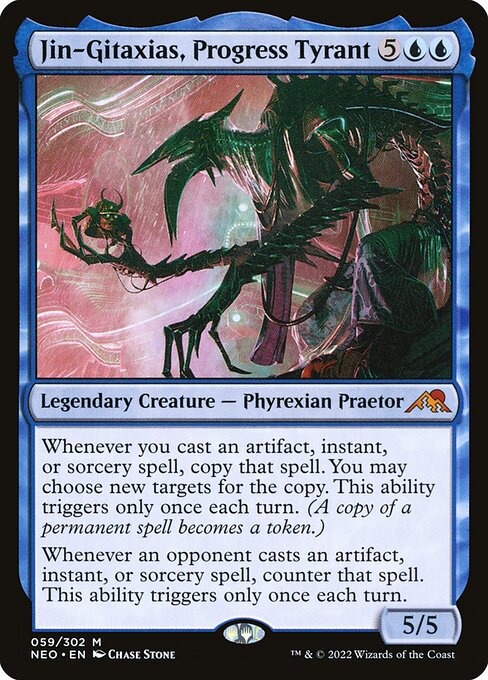


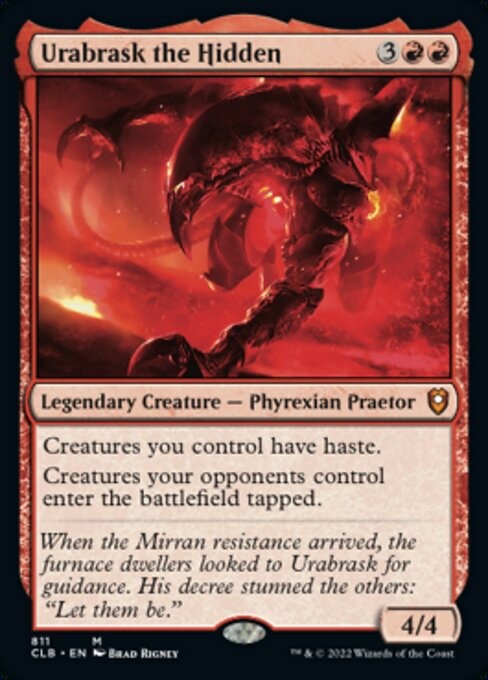
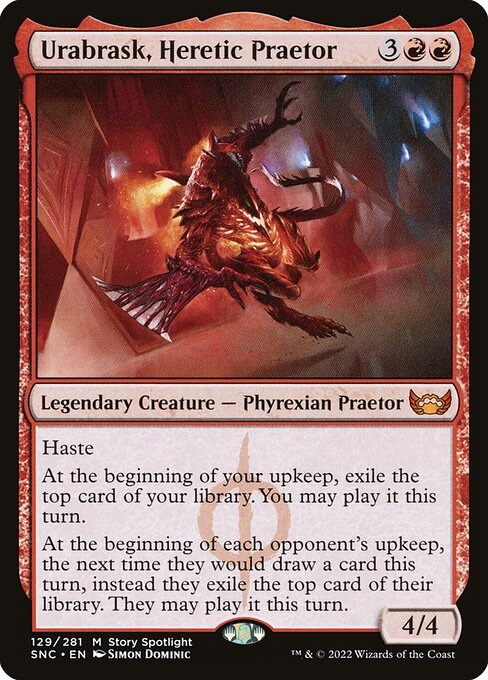

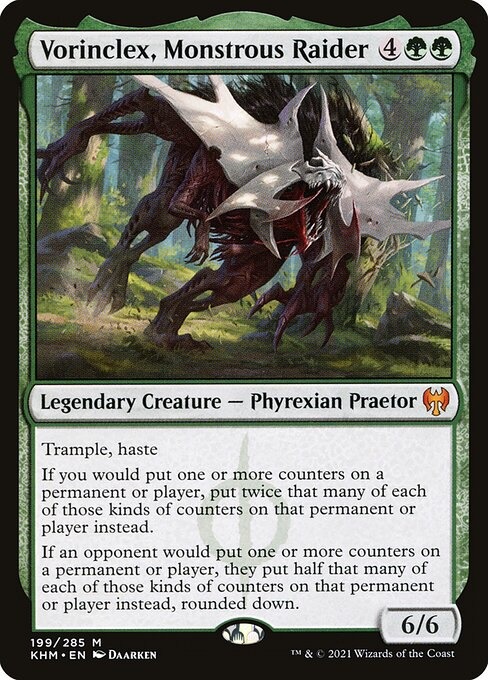
Elesh Norn, Mother of Machines finishes out our group of praetors! Definitely a powerhouse, I’m looking forward to playing her.
oh god

I'm stuck in a bit of a pickle at the moment. I've been a little kinda sorta completely fucking gutted by the election results. I feel so utterly saddened for 2SLGBTQIA+ people, BIPOC, women, people with disabilities who now have to live beneath that man's shadow.
Among the sadness is an ache.
An ache to do something. An ache to take action of some kind. I have no idea what kind yet, but I can't stop thinking about it. I am brewing. Do I mean to create something? I don't know yet. I'll figure it out. But I mean to do something.
Community.
I've been reading lately. A book called "How To Think Like A Woman," by Regan Penaluna. The book tells the author's personal memoir, as well as the stories of 4 Early-Modern philosophers (who were women). I'm not a particularly smart person, sometimes I needed to read a paragraph or even a passage multiple times to really 'get it,' but some things stuck with me.
These philosophers were steadfast in their beliefs that women were deserving of education, asylum from abusive husbands, that they shouldn't need to hide their sexuality, that they should be allowed to pursue their intellectual desires just as a man could. But in these demands they each were specific. These freedoms were not meant to enable selfishness in women, as they often did in men. They believed that these freedoms, for all people, also came with the duty to better one's community - to give back. That embracing the people, valuing the people, fostering each individual, would further the community.
This point of community is where I've been stuck all day long. We all need community right now. We need shoulders to cry on, we need friends to laugh with, we need wise folk to tell us what the fuck to do now.
I don't know what I'm going to do - or make - but community needs to be a central theme.
Queerness & Transness.
I also feel like I've created nothing inherently queer. I've abandoned writing for some years now, my projects are old. Older than my realizations about identity. Older than my epiphanies about transness. I want to do something fuckin' gay as hell. I want to pour energy into something that may in some small way counterbalance the hate being screamed into the universe, infecting the pretty space-dust that I wanted to use to highlight my blush. I want to create something that whispers with a forked tongue: "Fuck. You."
Fact or Fiction.
Will it be fact or fiction? Do I want to search for beautiful, real stories to tell and help spread them? Or do I want to create something entirely new? I'm not a documentary producer, but should I be? My heart is in crafting stories, but maybe it's time to set that aside for a while in order to spread true stories that inspire good and justice. Maybe I'd better stick to what I know and make something up.
Abilities // Restrictions.
I am one person. Alone I can write, but that is difficult without an idea. I have the tinder and plenty of firewood, but I need a fucking spark. Once I have the spark I can do more.
I'm a filmmaker, I produce and edit. That's what I enjoy doing best. Not shit I can do without the idea. So for now those sit on the backburner.
I also have a(n admittedly small) rolodex of lovely queer individuals who may also feel a little distraught at the moment. Might be time to meet with them to discuss working on... something?
Budget is zero. Don't know what the project is so right now necessary funds are also zero, which is great. But nobody's getting paid for whatever the fuck comes of this, unless I can be smart.
Ending For Now.
This is all I can bear to write and word-vomit for now. I have been so full of energy and stress thinking about this all day long. I needed to get my thoughts out. If you feel the same ache I do, if there's any way I can help you make your "Fuck. You." project, or if you want to contribute to mine, please DM me and I'll be so happy to discuss and talk.
Please be safe, please be there for your fellow human beings, please be good to each other.
A god of fire and void, meteor king of conquest, plumiting downwards to its next victim (bonus points if its a blue like a commet)

Deity: Mnyull, the Revelation Tyrant
Fasinating stuff my friend, my latest translation of old imperial accounts reveal a previously unknown confession from the rogue general Paldermot. As you well know, current historical narratives have the general sacking the capital city in a failed attempt to seize power from the Tribunes, but if this text is to be believed the Tribunes captured Paldermot and dispersed his rebel legion before he ever entered the city. It goes on to say, in a transcription of Paldermot's own words that he had "Followed a star" to the "seat of a new imperium", and claimed that the star had promised great allies to aid him in his conquest. The text is unquestionably authentic , but it throws our entire understanding of events into question; If Paldermot was captured in the midst of his rebellion, who or what destroyed the capital and turned the surrounding countryside into a crater?
Setup: Hurdling across the void of the astral sea, the meteoric god Mnyull brings ruin wherever he goes, the embodiment of unrelenting invasion at the hands of an inexorable foe. Unlike other gods which present themselves in abstract forms felt across the multiverse Mnyull prefers to exist as an incarnated singular being, a towering construct built around the mummified yet undying body of his current mortal avatar.
This living reliquary leads an army of crusading zealots scattered throughout the multiverse known as the starry horde, followers and adherents of its former vessels who believe that by serving the Revelation Tyrant, they continue the legacy of their particular heaven-chosen liege. It is important to note then that Mnyull and his followers do not adhere to any one ideology as they hold the act of conquest itself sacred, whatever form that conquest takes. Like a shooting star the tyrant god is constantly on the move, dragging his followers into one conflict after another before retiring to a palatial demiplane of rock and ice for decades or centuries at a time to rule those realms where his cult has taken hold.
It is for this reason that some theologians have considered classifying Mnyull as an outergod, those divine beings considered actively hostile to the stability of realities they interact with. Debate rages in those lofty circles however as the hostility the Revelation Tyrant represents usually takes the form of “ Invade them with an alien army before or after hitting their world with a big rock or series of big rocks”. While the scholar dither, Mnyull bides his time, growing ever closer to some innocent world that has no idea of the disaster that is about to strike it.
Hooks:
The Party’s homeland is struck by the invasion force of a kingdom that fell to Mnyull’s influence generations ago. While more traditional warfare occupies the early adventures of the campaign, they begin to uncover hints of lore about their enemy’s newly arisen (and apparently immortal) theocratic leader along with the strange monument she’s building. Just as it seems they might have an upper hand against the invaders, their enemies deploy new and terrifying weapons and otherworldy allies, sourced from the portal they’ve just finished building.
Sometimes Mnyull decides to feed his urge for conquest by invading a random plane, riding a chunk of astral rock through its firmament and establishing a kingdom wherever he lands. The Revelation Tyrant is not a creature of foresight however, and on his most recent outing ended up impacting into one of that plane’s moons. Refusing to give up he’s carved out a realm among the strange creatures that live among the palid rocks of that blasted planetoid, and now sets his sites upon the verdant world below.
While enjoying a trip to the local archives and observatory, the party are interrupted by agents of the starry horde, looking to plunder the vaults looking for information regarding great weapons created to break worlds known only as “The Anvils”. Predating even the Revelation Tyrant’s earliest memory, Mnyull once used his divine will to steer these ancient tools towards ever more destructive ends, until a coalition of forgotten heroes toppled him from his throne for fear he would turn the weapons upon them.
Background: None can say where Mnyull first emerged, but planear scholars have charted the tyrant god’s course across world after world and have noticed a self perpetuating cycle: Some would be warlord sees a silvery star or comet and it awakens in them a desire for conquest, though more often than not they would have began life as someone who already exerted authority over others. Strange powers and allies allow these conquerors to amass a fanatical following and become a true threat to the powers of that age, leading to a climatic confrontation where they are either killed, or rise to claim a throne and immortality. A harsh and “glorious” reign begins, and the ruler demands the construction of great monuments which will serve as portals in Mnyull’s next conquest. Should the Revelation Tyrant lack a body at the moment, one of these ascendant rulers becomes his next vessel, feverishly instructing their underlings how thier body is to be mutilated and interred in preparation for their apotheosis. When the reliquary is built around them, Mnyull’s silver-blue light strikes them full force, their soul igniting to serve as the perpetual fuel for the tyrant god’s engine.
Titles: The Tyrant’s Star, All-conquering Meteor King, Khan of the Starry Horde, Imperitor-Celestium. Along with any other titles inherited from his innumerable vessels.
Signs: A silver-blue comet or star blazing in the sky, Meteor Showers that produce snowfall without clouds, Ecstatic Visions of victory and conquest, weaponry shining silver
Symbols: The arc of a Comet above a Crown, Chariot, or Other sign of Lordship.
Followers: Warmongers of all kinds, be they authoritarians or Rebels. Mnyull has also accumulated followers across the astral sea, so numerous entities which range the cosmos looking for battle are drawn into his service voluntarily or by indoctrination.
Art

🧦☕🧸A Guide to Writing Cozy Fantasy
Check out my masterpost for more tips :)
What is "cozy fantasy"? 🧺🪵
Cozy fantasy is a subgenre that is characterized by a more everyday approach to fantasy.
While its definition is not as clear-cut (everyone will have a sightly different idea of what it needs to look like), there are some general approaches to writing in this subgenre.
Elements of Cozy Fantasy 🕯️ೀ
A comforting, healing ambience 🍪
Rather than bloody battle and cunning witches, we have our next door wizard baker chumming up his special pumpkin pie.
Every magical book at their deepest core evoke a healing quality, but for these cozy novels, this warm element takes control.
2. "Kindness” and ‘gentleness” tropes 🍂
Found family/community, a sense of togetherness
Kind hearted protangoists
Plots gull of joy, hope or happy endings. Give your readers reassurance that everything will work out. And they do.
Ambience woven in the worldbuilding that gets the reader intitamely close to the world
Slower pace, allow the reader to delve into the story world and build stake in these kind, loving characters.
Slice of life: provide personal insight into the character’s “mundane” lives.
The plot must take this "happy" nad kind" element as the MAIN theme. Every book provides catharsis at the end, but if the process if filled with dark, dangerous adventures, that's not cozy at all!
3. Cozy doesn’t mean “no/low stake” 📖
No novel would be interesting without conflict and some kind of loss.
Think of “personal” stakes. Cozy fantasy can be grand adventures, quiet magical quests, fairytales or healing slice of life stories.
For example, the protagonist can develop new relationship around town and figure out her passion to express the theme of importance of enduring.
4. Generally slower pace, focusing more on the inner development of the protagonist and the main side characters.
Cozy Fantasy Starter Recommendations 🎧🌙
Legends and Lattes by Travis Baldree
The Very Secret Society of Irregular Witches by Sangu Mandanna
Can't Spell Treason Without Tea by Rebecca Thorne
The House in the Cerulean Sea by T.J.Klune
Bookshops & Bonedust by Travie Baldree
Emily Wilde's Encyclopaedia of Faeries by Heather Fawcett
Howl's Moving Castle by Diana Wynne Jones
If you like my blog, buy me a coffee☕ and find me on instagram! 📸
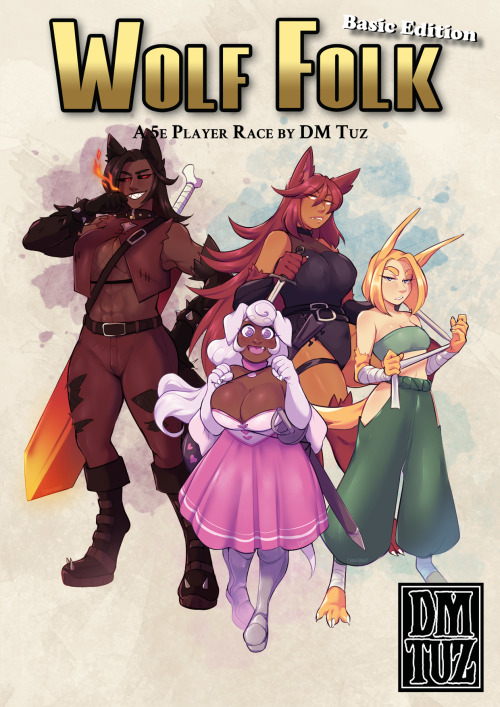



Wolf Folk 5e Player Race
Artwork by QueenChikkibug and me!
Get the full PDF on my patreon for free!
Want more updates on future content and other regular updates, consider following me on twitter!
- Tuz

Dare: The Silent King’s Vigil
Setup: many in the castle will attest to the existence of a ghost in the catacombs beneath the foundations, if not from their own experience, but from generations of tales going back to the days of the petty, tribal kings, when the realm was divided up into a patchwork of little territories ruled over by whatever warlord could martial enough blades to hold them.
While most stories tell of the ghost stalking out of its crypt to drag the living down to the shadows with it, or attempted exorcisms of blade and blessed book, a few hold the whisper of truth: those that venture down to the catacombs when the moon is right and sit in silent meditation with the peaceful phantom can gain great insights into themselves, or secret truths known only to the dead.
Adventure Hooks:
While staying in the castle of their patron, the party hears the rumor of the ghost and its vigil, particularly from a harrowed young page who was thrown into the catacombs by his youthful tormentors and developed several nervous quirks from the experience. They tell the party that it wasn’t the ghost itself that traumatized them so, but the fact that they were trapped in the catacombs so long with noone but the dead for company. Chief among the page’s new eccentricities is a fascination with the macabre, and they gently try to coax the party down into the catacombs so they can share in the page’s experience.
By Feudal grant, a newly risen knight has taken up residence in the castle, and is more than a little put out by the fact that her new home has such an infamous reputation among the surrounding populace. Seeking to show her new prestige and authority, she puts out a call for brave warriors willing and capable of removing this unwelcome spirit from her domicile.
A member of the clergy has gone missing while attempting the Silent King’s vigil, locking themselves inside the tombs for several days while attempting to communicate with and permanently put the spirit to rest. A mentor to the party’s cleric, or important for one of thier ongoing adventures, the party must search the catacombs for the missing vicar, or attempt his abandoned ritual and ask the ghost where the holyman might have wandered off to.
Keep reading
-
 icyowl liked this · 1 week ago
icyowl liked this · 1 week ago -
 aforgottencoda liked this · 1 week ago
aforgottencoda liked this · 1 week ago -
 sociallyineptbean liked this · 1 week ago
sociallyineptbean liked this · 1 week ago -
 yershina liked this · 1 week ago
yershina liked this · 1 week ago -
 heckcareoxytwit liked this · 1 month ago
heckcareoxytwit liked this · 1 month ago -
 noelle151 reblogged this · 1 month ago
noelle151 reblogged this · 1 month ago -
 noelle151 liked this · 1 month ago
noelle151 liked this · 1 month ago -
 yukifvss liked this · 1 month ago
yukifvss liked this · 1 month ago -
 mcnamedyuma liked this · 2 months ago
mcnamedyuma liked this · 2 months ago -
 ibeatyourmomatmariokart reblogged this · 2 months ago
ibeatyourmomatmariokart reblogged this · 2 months ago -
 donttellmymomilostmypills liked this · 2 months ago
donttellmymomilostmypills liked this · 2 months ago -
 elder-dwarf liked this · 2 months ago
elder-dwarf liked this · 2 months ago -
 autumntipsy reblogged this · 3 months ago
autumntipsy reblogged this · 3 months ago -
 kirrarae liked this · 3 months ago
kirrarae liked this · 3 months ago -
 thyladyofathousand-n-onehobbies reblogged this · 3 months ago
thyladyofathousand-n-onehobbies reblogged this · 3 months ago -
 visceragarden reblogged this · 3 months ago
visceragarden reblogged this · 3 months ago -
 newdawnhorizon reblogged this · 4 months ago
newdawnhorizon reblogged this · 4 months ago -
 demonixoverlord liked this · 4 months ago
demonixoverlord liked this · 4 months ago -
 samsamsam7 liked this · 4 months ago
samsamsam7 liked this · 4 months ago -
 xqdormir liked this · 4 months ago
xqdormir liked this · 4 months ago -
 diamondrose015 liked this · 4 months ago
diamondrose015 liked this · 4 months ago -
 thatpieceoftrash liked this · 5 months ago
thatpieceoftrash liked this · 5 months ago -
 lexskxtches reblogged this · 5 months ago
lexskxtches reblogged this · 5 months ago -
 tumblingdowntheway2019 liked this · 5 months ago
tumblingdowntheway2019 liked this · 5 months ago -
 ellyabdull23 liked this · 5 months ago
ellyabdull23 liked this · 5 months ago -
 cherrychopstixx liked this · 5 months ago
cherrychopstixx liked this · 5 months ago -
 dreamandgrind liked this · 6 months ago
dreamandgrind liked this · 6 months ago -
 heckcareoxytwit reblogged this · 6 months ago
heckcareoxytwit reblogged this · 6 months ago -
 sapphically-said reblogged this · 6 months ago
sapphically-said reblogged this · 6 months ago -
 mydreamsthieved reblogged this · 7 months ago
mydreamsthieved reblogged this · 7 months ago -
 dance-is-life27 liked this · 8 months ago
dance-is-life27 liked this · 8 months ago -
 wildfieldauthor reblogged this · 8 months ago
wildfieldauthor reblogged this · 8 months ago -
 whitebeltwriter reblogged this · 8 months ago
whitebeltwriter reblogged this · 8 months ago -
 whitebeltwriter liked this · 8 months ago
whitebeltwriter liked this · 8 months ago -
 bishopsbelova reblogged this · 8 months ago
bishopsbelova reblogged this · 8 months ago -
 clverloom liked this · 8 months ago
clverloom liked this · 8 months ago -
 kafktesque liked this · 8 months ago
kafktesque liked this · 8 months ago -
 landonstower liked this · 8 months ago
landonstower liked this · 8 months ago -
 daz-uu liked this · 8 months ago
daz-uu liked this · 8 months ago -
 lowkeesums liked this · 8 months ago
lowkeesums liked this · 8 months ago -
 littlelemonme liked this · 8 months ago
littlelemonme liked this · 8 months ago -
 localowlhousefanatic liked this · 8 months ago
localowlhousefanatic liked this · 8 months ago
